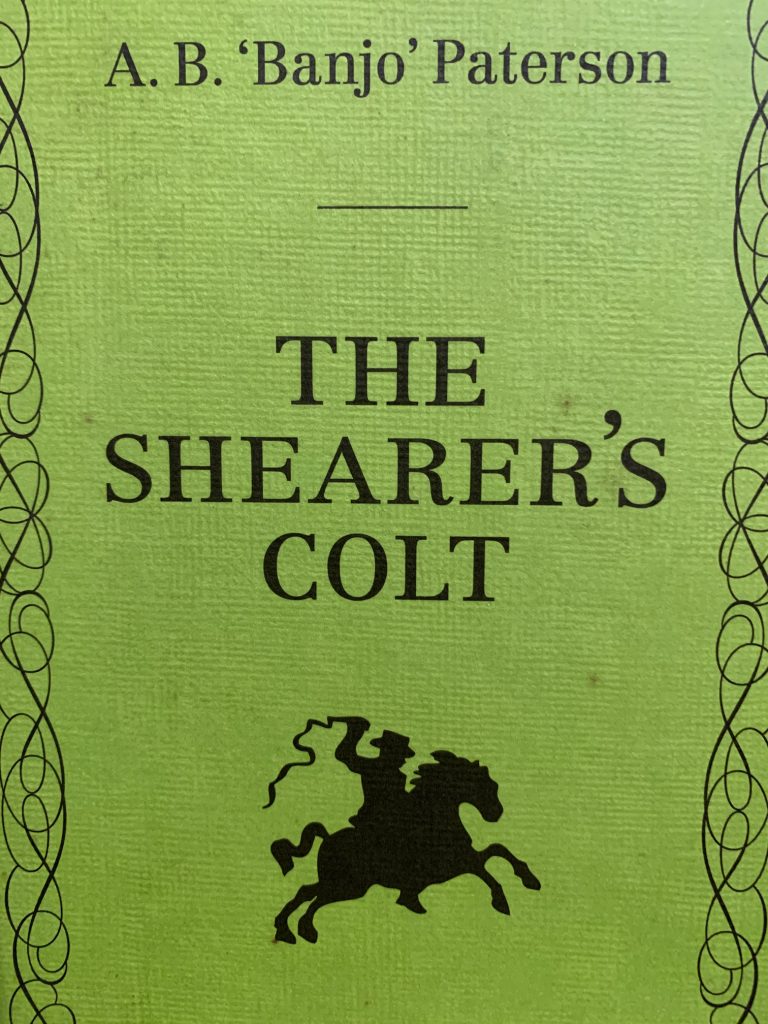Characters of Chinese heritage appear in many works of Australian literature, all too often as cooks or gardeners with little personality and less background. They serve, like Ah Wong (see No.5), as stereotypes rather than character studies. There are many reasons for this ranging from the very power of those stereotypes to inhibit real knowledge to the gradual whitewashing of Australian history throughout the 20th century that simply deleted much of the role of Chinese Australians from it.

In The Shearer’s Colt written by Banjo Paterson in 1936 but set perhaps in the 1890s we have a similar stock Chinese character called Jimmy the Pat. Banjo Paterson is most well-known for his poetry but he also wrote a couple of novels and in this one Paterson introduces his character with such a focused blast of stereotypes and generalisations that it deserves mention as a classic of the genre.
This list of Jimmy’s career highlights also tells us what a white Australian of Paterson’s generation knew or thought they knew about Chinese Australians:
“Don’t you make any mistake,” he said, “this is a wonderful chap, this Chow. He started with nothing—just a coolie—but he was a big, powerful bloke and could mix it with anybody. He was in the ring for a bit, what d’you think of that—a Chow in the ring! He could take a punch too, let me tell you. ‘My face all same iun,’ he’d say. Then he took on running fan-tan and pakapoo joints, and he got to be a big man, because if any of the larrikin crowd got playing up Jimmy could knock him cold. Then he started smuggling opium and working it back to the blacks and Chows up in the Territory—heaven only knows what he made out of that. Then he started importing Chinese coolies from Canton with false identification papers, and he made these coolies work as slaves for him in Chinese gardens, until they had paid him big money. He owns a couple of stations on the quiet. And then, dash me, if he doesn’t start bookmaking!”
“I’ll tell you something,” he said, “Jimmy’s a very solid man and gives thousands to charities. But there’s hardly a fan-tan shop or an opium joint in Queensland but what Jimmy’s got a finger in it. There isn’t a criminal in Queensland but what would do exactly what Jimmy told him and do it at the double. I think that he took up the bookmaking so that he could travel about and keep an eye on all sorts of crooked jobs. Anything from fan-tan to murder. I don’t put anything past Jimmy. His right name is Kum Yoon Jim, but the boys call him Jimmy the Pat. They call all Chinamen ‘Pat.’ The larrikin crowd only call him that behind his back. He’ll hit any one that calls him Pat to his face. Tough on the Irish, isn’t it, when a Chinaman, will strike a man for calling him ‘Pat’! It ought to be a compliment.”
What Banjo Paterson has done here is compress into a single paragraph and a single person a great many of the elements of Chinese Australian history as perceived by European Australians. Thus we have the ‘coolie’ or labourer (see No.59), gambling (see No.73), opium (see No.24), and false papers (see No.1). The idea of a Chinese boxer may well have come from the real life Rud Kee who worked with Jimmy Sharman for over 50 years. ‘Pat’ as a slang term for a Chinese person was common in the early 20th century, especially in sporting circles.[1] While finally, Paterson’s grandfather Robert Barton likely had some indentured workers from Amoy (see No.59) on his Bathurst property in the 1850s.[2]
Banjo Paterson was not being especially racist when he created Jimmy the Pat but he was drawing on the half-knowledge and stereotypes of his generation that would have made his readers readily accept this character. Yet Jimmy the Pat while a ‘bad guy’ is also a strong character who dominates his world. Paterson does not hesitate to do this as his generation did not necessarily see Chinese Australians as the unrelenting victims that another two generations of whitewashing would try to make the norm.
For a less stereotypical view try:
[1] Sydney Sportsman, 18 February 1920, p.1, Pinching the Pats. A CHINAMAN’S LUCK.
[2] For the reference to both Rud Kee and Robert Paterson the author thanks Dr. Juanita Kwok.

